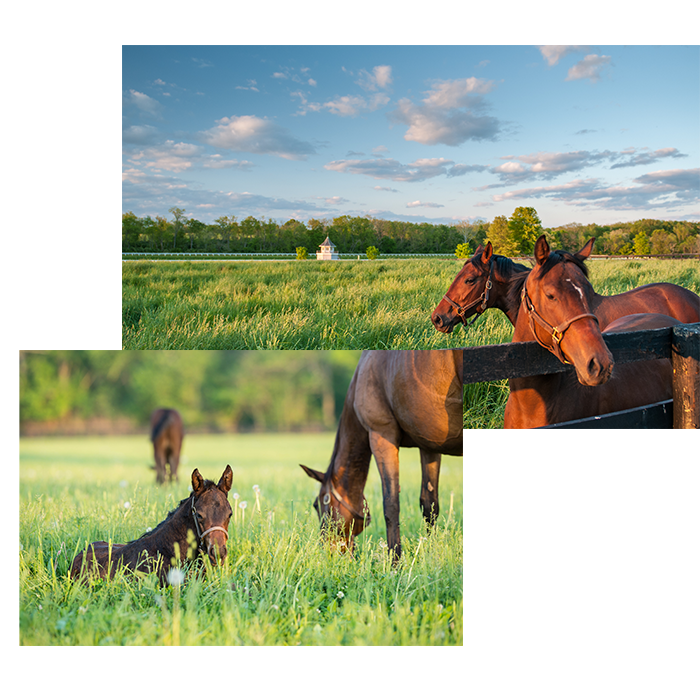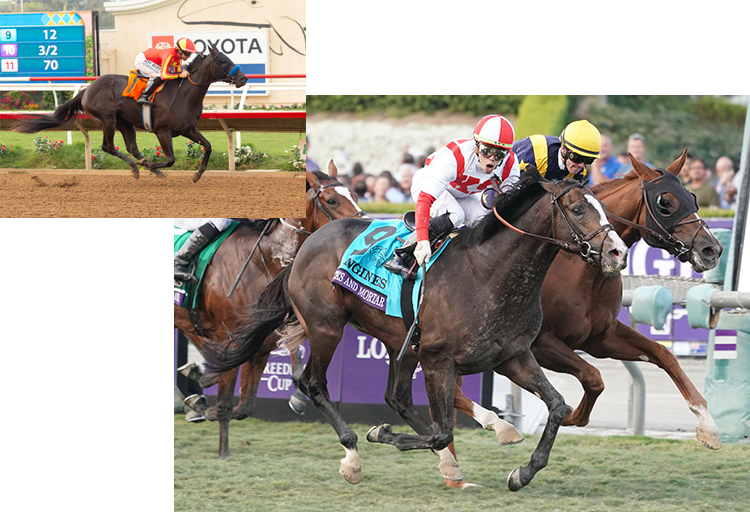

Stone Farm: For half of a century.

If you take care of the land,
the land will take care of you.

We’re trying to raise you a good horse.

We sell only what we raise.


Though many American racing fans may remember him mostly as the big bay who finished second to Charismatic in the 1999 Kentucky Derby and Preakness, Menifee is making a serious impact in the racing industry—in South Korea. Menifee shipped overseas in 2006 and seems poised to follow a similar path to that of Sunday Silence in Japan.
On the track, the son of Harlan finished out of the money just once (behind Lemon Drop Kid in the Belmont) during his 11-race career for trainer Elliot Walden. That career included wins in the G1 Blue Grass and G1 Haskell for owner/breeders Arthur Hancock and James Stone.
The stallion’s blue blood (he is out of Kentucky Broodmare of the Year Anne Campbell, making him a half to Desert Wine) brought him some success in his American stud career. He sat eleventh on the third-crop sire list in 2005 for a $15,000 stud fee at Stone Farm. At the time he went into quarantine to be shipped overseas, Menifee had stood for seven seasons and produced 10 stakes winners, including three graded winners.
“Menifee was only ten years old when we bought him and was among the top sires of his first three crops in North America,” said bloodstock agent Thomas Clark, who helped negotiate the deal to send the horse abroad. “It was not as if he was a failure in Kentucky and therefore ‘for sale.’ He was not.”
Arthur Hancock was hesitant to sell the horse at first: Clark recalled that when the offer came through from the Korean Racing Association, Hancock flinched at the prospect of sending the homebred so far away.
“I first had to convince them that the horse would be safe and happy,” Clark said. “Arthur was worried—‘What happens if there is a war over there? My horse will be right in the middle of it!’”
Clark was able to reassure Hancock that the horse would be well-looked after, and wouldn’t be overworked—stallions are restricted to around 90 mares per year.
For their part, Korean Racing Association officials say Menifee was almost overlooked for the spot.
“Whenever KRA is going to buy a stallion from overseas, we analyze the whole thing—sires he is related to and performance records, including his,” said Hong Min of the KRA. “After analyzing, we choose more than 50 candidates and inspect them. Finally, we select several candidates. In 2006, Menifee was fourth on the list and luckily KRA failed to negotiate the other three stallions.”
The KRA has been an increasingly active force in the American bloodstock market, where it shops with a strict budget both privately and at auction. The government ships racing stock and broodmares back to Korea for resale to private owners who don’t have the time or the means to shop internationally themselves. The KRA retains some of the stallions it buys and makes them available free of charge to limited books. Fifteen of the country’s 109 stallions are government-owned.
The country’s breeding industry is almost exclusively dominated by the American Thoroughbred, and Menifee is the indomitable king of them all. Currently, the stallion sits first on the general sires list with progeny earnings of $5,126,363 generated by 131 runners. The next horse on the list, Forest Camp, boasts progeny earnings of $3,203,395. Menifee also topped the general sire list in 2013 and 2012 by similarly-impressive margins and was runner-up in 2011. In 2013, he had 17.3 percent winners from starters and has led the juvenile sire list every year since 2010. What’s perhaps most impressive is that Menifee has made this kind of impact with just seven race cards in the country each week.
The stallion’s leading earner right now is also the country’s racing superstar: Queen’s Blade, who became the second filly in the past two years to win both the Korean Oaks and Korean Derby, and who will be aiming for a Triple Crown sweep with the Minister’s Cup on Sunday. Incidentally, Menifee also sired the runner-up in that Oaks effort—Nubi Queen.
The KRA points out that he’s a valued commodity in the sale ring, as well. His yearlings average $117,521, while his 2-year-olds average $71,818 at Korean sale.
“One interesting thing is that if a Menifee colt [looks good physically], he starts at $100,000,” said Hong. “The competition is so keen to get to him.”
The reason for the stallion’s success is hard to pinpoint, but Clark said it’s not much of a surprise.
“No one can say definitively why Menifee is such a dominant sire in South Korea since his first crop raced there in 2010,” said Clark, who likens the stallion’s success with lower-priced American mares to the career arc of Into Mischief. “A very large proportion of the 90 mares bred to Menifee each year are U.S. bred mares purchased at Keeneland or fillies bought at our breeze-up sales beginning in 2004, but those mares with close-up Korean ancestry also seem to cross well with Menifee, I am told.”
Menifee is 18 years old this year, and Korean breeders can only hope that the similarities between him and fellow Hancock ex-patriate Sunday Silence continue to develop. Twelve years after his death, the impact of Sunday Silence (who led Japan’s sire list from 1995 to 2007) is still felt across the breeding industry, with progeny earnings of well over $500 million.
